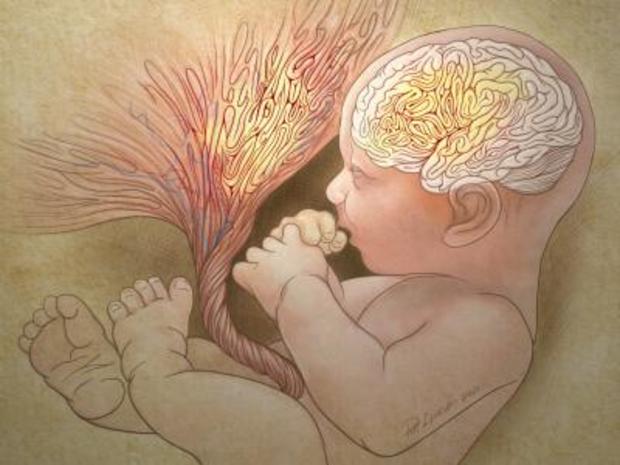Scientists find clues to autism risk in placentas
Doctors often say children with autism should be diagnosed as early as possible, because early intervention before a child turns 3 can greatly improve his or her development.
However, the developmental disorder may be tough for doctors to diagnose at an early age. Many children do not receive a final diagnosis until they reach 4 years old, according to the Centers for Disease Control and Prevention.
Now, researchers say they have discovered that examining the placenta -- an organ that provides nutrients from the mother to the baby -- at birth may reveal clues about her new child's risk for developing the developmental disorder.
"At birth we have a tool now that can tell us who's at risk and who isn't at risk for autism," study author Dr. Harvey Kliman, a scientist in the department of obstetrics, gynecology and reproductive sciences at the Yale School of Medicine in New Haven, Conn., told USA Today.
Autism spectrum disorders are a group of developmental disabilities ranging in severity that can cause significant social, communication and behavioral deficits. Approximatelyone in 50U.S. schoolchildren are diagnosed with autism, rates that rose from an estimated one in 88 children only one year earlier.
Kliman and his team examined 117 placentas from infants of families that had one or more previous children with autism. Couples who have a child with autism are nine times more likely to have another diagnosed with the disorder, he said.
The families were enrolled in an autism study that searched for markers of disease risk in babies. The placentas from at-risk infants were compared to 100 other placentas from children living in the same geographic area.
The researchers saw that placentas from at-risk babies had more abnormal cell growths and folds called "trophoblast inclusions" than the placentas used for comparison. The at-risk placentas had up to 15 trophoblast inclusions, while none of the comparison placentas had more than two.
Kliman "conservatively" estimated four or more inclusions could predict almost a 97-percent likelihood that a child will be at risk for -- not necessarily be diagnosed with -- autism.
"I hope that diagnosing the risk of developing autism by examining the placenta at birth will become routine, and that the children who are shown to have increased numbers of trophoblast inclusions will have early interventions and an improved quality of life as a result of this test," he concluded in a statement.
The study was published April 25 in Biological Psychiatry.
Dr. Chris Mann Sullivan, a behavioral analyst in Morrisville, N.C., was not in the study, but sent her placenta to Kliman after her now 3-year-old daughter was born, the New York Times reported.
He found five inclusions, leading Sullivan to start intensive therapy with her daughter, who is now 3 and has some mild difficulties but has not been diagnosed with autism.
- EEG brain scans may detect signs of autism in 2-year-olds
- Some children may lose autism diagnosis with age, gov't study finds
- Autism intervention "normalizes" kids' brain function in study
"What would have happened if I did absolutely nothing, I'm not sure," She told the Times. "I think it's a great way for parents to say, 'O.K., we have some risk factors; we're not going to ignore it.'"
Kliman told the paper the inclusions were like a "check-engine light" that may signal a problem.
Dr. Daniel Coury, chief of developmental and behavioral pediatrics at Nationwide Children's Hospital in Columbus, Ohio, praised the study but told HealthDay it's too soon to routinely test placentas for autism risk and more studies are needed.
"Being able to identify those infants at greater risk so we can target our interventions is really big news," he said.


